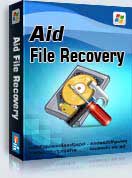Recovering data from accidentally formatted Bitlocker encrypted drive when chkdsk fails in Windows 10/Windows 7/Windows 8/Windows 8.1/Windows XP PC, best format recovery software help you recover MS word,excel, pictures, music, video files from Recovering data from accidentally formatted Bitlocker encrypted drive when chkdsk fails
Use "unformat" to recover formatted drive for " Recovering data from accidentally formatted Bitlocker encrypted drive when chkdsk fails" after quick format,full format,accidentally formatted,reformatting,High-level formatting,Low-level formatting.
Use "recover partition" to recover files - Recovering data from accidentally formatted Bitlocker encrypted drive when chkdsk fails laptop partition,lost partition,changed ,damaged partition.And if the size or position of partition is changed by format,It can not recover with "unformat"so you can use "recover partition"mode.
Use "undelete" to recover deleted files - Recovering data from accidentally formatted Bitlocker encrypted drive when chkdsk fails after Virus attack,Recycle bin clear,disk cleanup,Press shift del by mistake,permanently empty recycle bin,shift delete ,accidentally deleted by a mistake.
Use "Full Scan" to recover data - Recovering data from accidentally formatted Bitlocker encrypted drive when chkdsk fails which can not be found with "undelete" and "unformat" and "recover partition",after showing an error,display as raw file system,unformatted,unknown partition,unpartitioned,needs to be formatted,or the file system is not exfat,not fat32,not ntfs.
"Recovering data from accidentally formatted Bitlocker encrypted drive when chkdsk fails ", I had some data on a 1tb bitlocker encrypted NTFS format drive, which was 100% encrypted at the time of the accident. I accidentally formatted the drive by selecting the wrong drive while using software to create a bootable USB stick out of an ISO. The software (PowerISO) attempted to write over the bitlocker encrypted drive with a Fat32 partition, but displayed an error message. Afterwards, Windows was able to read a scrambled version of my drive. Everything was a list of symbols, and the drive was almost full (as it is while it encrypts in the first place). I managed to run windows 8's repair-bde application on the drive, and the process slowly decrypted my data onto another drive. After 100%, it told me to run Chkdsk /f. I did so, and was told "The type of the file system is NTFS. Unable to determine volume version and state. CHKDSK aborted." Currently, in Window's Disk Management utility the drive reads as RAW. Its status is Healthy. In Window's shell, the drive displays no side or information - but a letter appears for it. When I click that, it says "Location is not available. G:\ is not accessible. The disk structure is corrupted and unreadable." It then asks me if I want to format the drive. Where to from hear? Any help is appreciated. It's not the end of the world if this data is lost, as luckily I backed up a lot of what was on this drive, but some material is currently lost and I'd like to get it back. TL;DR version: - I accidentally formatted my bitlocker encrypted drive (100% encrypted) via PowerISO - I ran Repair BDE successfully, but it asked me to run Chkdsk /f which didn't work. - Windows Disk management reads the drive as RAW. Chkdsk says its NTFS. Shell says its corrupt. - Is my data lost?
Formatting a disk for use by an operating system and its applications typically involves three different processes.High-level formatting is the process of setting up an empty file system on a disk partition or logical volume and, for PCs, installing a boot sector. This is a fast operation, and is sometimes referred to as quick formatting. Reformatting often carries the implication that the operating system and all other software will be reinstalled after the format is complete. Rather than fixing an installation suffering from malfunction or security compromise, it may be necessary to simply reformat everything and start from scratch. Various colloquialisms exist for this process, such as "wipe and reload", "nuke and pave", "reimage", etc. Sometimes, data present in the physical drives (Internal/External Hard disk, Pen Drive, etc.) gets lost, deleted and formatted due to circumstances like virus attack, accidental deletion or accidental use of SHIFT+DELETE. In these cases, data recovery software are used to recover/restore the data files. Logical recovery of files, partition, MBR and filesystem structures After the drive has been cloned to a new drive, it is suitable to attempt the retrieval of lost data. If the drive has failed logically, there are a number of reasons for that.Data damage can be caused when, for example, a file is written to a sector on the drive that has been damaged. This is the most common cause in a failing drive, meaning that data needs to be reconstructed to become readable. Corrupted documents can be recovered by several software methods or by manually reconstructing the document using a hex editor.
Aidfile Recovery Software Keyfeature
support FAT32 EXFAT NTFS and RAW file system
support Win32 (32 bits) and Win64 (64 bits)
Support Windows XP, Windows 8, Windows 8.1,Windows Vista, Windows 2003, 2008, 2012,Windows 10,Windows 7 .
Desktop & laptops Ultrabook:HP Pavilion,HP Compa,Alienware Alpha,Lenovo ThinkCentre,Lenovo IdeaCentre,Dell Inspiron,Dell XPS,Sony VAIO,Acer Aspire,Asus Transformer,Dell Latitude,Samsung Ativ Book,Asus VivoBook,HP Envy,Lenovo IBM ThinkPad,Lenovo IdeaPad Yoga,Microsoft Surface,Toshiba Satellite
MS Office document (Word, Excel, PowerPoint, Outlook) types (doc, docx, ppt, pptx, xls, xlsx, pst, etc.),photos (JPG, PNG, ICON, TIF, BMP, RAF, CR2, etc.), videos and audios (MPG, MP4, MP3, MTS, M2TS, 3GP, AVI, MOV, RM, RMVB, etc.), compressed files (rar, zip, etc.), PE files (exe, dll, lib, etc.) and so on.

